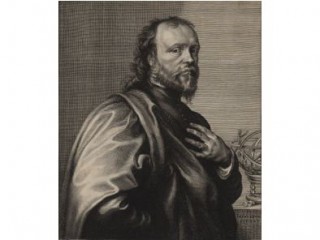
Kenelm Digby biography
Date of birth : 1603-07-11
Date of death : 1665-06-11
Birthplace : Buckinghamshire, England
Nationality : English
Category : Science and Technology
Last modified : 2011-12-21
Credited as : Philosopher, called the magazine of all arts, Founding member of the Royal Society
0 votes so far
Digby became a Catholic once more in 1635. He went into voluntary exile in Paris, where he spent most of his time until 1660. There he met both Marin Mersenne and Thomas Hobbes.
Returning to support Charles I in his struggle to establish episcopacy in Scotland (the Bishops' Wars), he found himself increasingly unpopular with the growing Puritan party. He left England for France again in 1641. Following an incident in which he killed a French nobleman, Mont le Ros, in a duel, he returned to England via Flanders in 1642, and was jailed by the House of Commons. He was eventually released at the intervention of Anne of Austria, and went back again to France. He remained there during the remainder of the period of the English Civil War. Parliament declared his property in England forfeit.
Queen Henrietta Maria had fled England in 1644, and he became her Chancellor. He was then engaged in unsuccessful attempts to solicit support for the English monarchy from Pope Innocent X. Following the establishment of The Protectorate under Oliver Cromwell, who believed in freedom of conscience, Digby was received by the government as a sort of unofficial representative of English Roman Catholics, and was sent in 1655 on a mission to the Papacy to try to reach an understanding. This again proved unsuccessful.
At the Restoration, Digby found himself in favor with the new regime due to his ties with Henrietta Maria, the Queen Mother. However, he was often in trouble with Charles II, and was once even banished from Court. Nonetheless, he was generally highly regarded until his death at the age of 62 from "the stone", likely caused by kidney stones.
Digby published a work of apologetics in 1638, A Conference with a Lady about choice of a Religion. In it he argued that the Catholic Church, possessing alone the qualifications of universality, unity of doctrine and uninterrupted apostolic succession, is the only true church, and that the intrusion of error into it is impossible.
Digby was regarded as an eccentric by contemporaries, partly because of his effusive personality, and partly because of his interests in scientific matters. Henry Stubbe called him "the very Pliny of our age for lying". He lived in a time when scientific enquiry had not settled down in any disciplined way. He spent enormous time and effort in the pursuits of astrology, and alchemy which he studied in the 1630s with Van Dyck.
Notable among his pursuits was the concept of the Powder of Sympathy. This was a kind of sympathetic magic; one manufactured a powder using appropriate astrological techniques, and daubed it, not on the injured part, but on whatever had caused the injury. His book on this salve went through 29 editions. Synchronising the effects of the powder, which apparently caused a noticeable effect on the patient when applied, was actually suggested in 1687 as a means of solving the longitude problem.
In 1644 he published together two major philosophical treatises, The Nature of Bodies and On the Immortality of Reasonable Souls. The latter was translated into Latin in 1661 by John Leyburn. These Two Treatises were his major natural-philosophical works, and showed a combination of Aristotelianism and atomism.
He was in touch with the leading intellectuals of the time, and was highly regarded by them; he was a founding member of the Royal Society and a member of its governing council from 1662 to 1663. His correspondence with Fermat contains the only extant mathematical proof by Fermat, a demonstration, using his method of descent, that the area of a Pythagorean triangle cannot be a square. His Discourse Concerning the Vegetation of Plants (1661) proved controversial among the Royal Society's members. He is credited with being the first person to note the importance of "vital air," or oxygen, to the sustenance of plants.
Digby is known for the publication of a cookbook, The Closet of the Eminently Learned Sir Kenelme Digbie Knight Opened, but it was actually published by a close servant, from his notes, in 1669, several years after his death. It is currently considered an excellent source of period recipes, particularly for beverages such as mead.
Digby is also considered the father of the modern wine bottle. During the 1630s, Digby owned a glassworks and manufactured wine bottles which were globular in shape with a high, tapered neck, a collar, and a punt. His manufacturing technique involved a coal furnace, made hotter than usual by the inclusion of a wind tunnel, and a higher ratio of sand to potash and lime than was customary. Digby's technique produced wine bottles which were stronger and more stable than most of their day, and which due to their translucent green or brown color protected the contents from light. During his exile and prison term, others claimed his technique as their own, but in 1662 Parliament recognized his claim to the invention as valid. Digby's bottles were also usually square which made them easier to stack.
Author of books:
-A Conference with a Lady about choice of a Religion (1635)
-Of the Nature of Bodies (1644)
-Of the Nature of Mans Soule (1644)
















